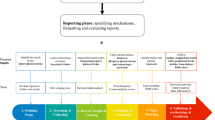Abstract
In the 1980s, Don Swanson proposed the concept of “undiscovered public knowledge,” and published several examples in which two disparate literatures (i.e., sets of articles having no papers in common, no authors in common, and few cross-citations) nevertheless held complementary pieces of knowledge that, when brought together, made compelling and testable predictions about potential therapies for human disorders. In the 1990s, Don and I published more predictions together and created a computer-assisted search strategy (“Arrowsmith”). At first, the so-called one-node search was emphasized, in which one begins with a single literature (e.g., that dealing with a disease) and searches for a second unknown literature having complementary knowledge (e.g. that dealing with potential therapies). However, we soon realized that the two-node search is better aligned to the information practices of most biomedical investigators: in this case, the user chooses two literatures and then seeks to identify meaningful links between them. Could typical biomedical investigators learn to carry out Arrowsmith analyses? Would they find routine occasions for using such a sophisticated tool? Would they uncover significant links that affect their experiments? Four years ago, we initiated a project to answer these questions, working with several neuroscience field testers. Initially we expected that investigators would spend several days learning how to carry out searches, and would spend several days analyzing each search. Instead, we completely re-designed the user interface, the back-end databases, and the methods of processing linking terms, so that investigators could use Arrowsmith without any tutorial at all, and requiring only minutes to carry out a search. The Arrowsmith Project now hosts a suite of free, public tools. It has launched new research spanning medical informatics, genomics and social informatics, and has, indeed, assisted investigators in formulating new experiments, with direct impact on basic science and neurological diseases.
The full version of this paper is published in the Proceedings of the 8th International Conference on Discovery Science, Lecture Notes in Artificial Intelligence Vol. 3735.
Similar content being viewed by others
Author information
Authors and Affiliations
Editor information
Editors and Affiliations
Rights and permissions
Copyright information
© 2005 Springer-Verlag Berlin Heidelberg
About this paper
Cite this paper
Smalheiser, N.R. (2005). The Arrowsmith Project: 2005 Status Report. In: Jain, S., Simon, H.U., Tomita, E. (eds) Algorithmic Learning Theory. ALT 2005. Lecture Notes in Computer Science(), vol 3734. Springer, Berlin, Heidelberg. https://doi.org/10.1007/11564089_3
Download citation
DOI: https://doi.org/10.1007/11564089_3
Publisher Name: Springer, Berlin, Heidelberg
Print ISBN: 978-3-540-29242-5
Online ISBN: 978-3-540-31696-1
eBook Packages: Computer ScienceComputer Science (R0)




